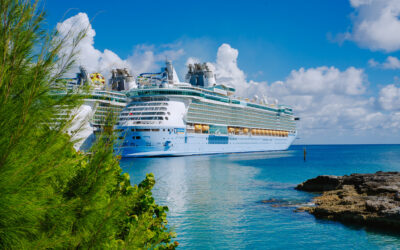Quantum...
Cloud Security: Ensuring Safety in the Cloud Era
Cloud Security: Ensuring Safety in the Cloud Era
In today’s digital landscape, cloud computing has become a cornerstone for businesses of all sizes. It offers scalability, flexibility, and cost-efficiency that traditional IT infrastructure cannot match. However, as organizations increasingly migrate to the cloud, ensuring the security of cloud environments has become a top priority. This blog will explore the importance of cloud security tools, developing a robust cloud security strategy, and implementing an effective cloud security policy to safeguard digital assets in the cloud era.
The Importance of Cloud Security
Cloud security involves a set of policies, technologies, and controls designed to protect data, applications, and infrastructure associated with cloud computing. With the increasing number of cyber threats, securing cloud environments is critical to prevent data breaches, unauthorized access, and other security incidents. Effective cloud security ensures that sensitive information remains confidential, maintains its integrity, and is available when needed.
Key Components of Cloud Security
1. Cloud Security Tools
Leveraging **cloud security tools** is essential to enhance the security posture of cloud environments. These tools help organizations monitor, detect, and respond to security threats in real-time. Some of the key **cloud security tools** include:
– Security Information and Event Management (SIEM): SIEM solutions collect, analyze, and respond to security events across the cloud environment. They provide centralized visibility into security activities and automate responses to incidents, improving the efficiency and effectiveness of security operations.
– Cloud Access Security Brokers (CASBs): CASBs enforce security policies, monitor user activity, and protect data across multiple cloud services. They offer capabilities such as data loss prevention (DLP) and encryption to safeguard sensitive information.
– Identity and Access Management (IAM): IAM solutions manage identities and their access to resources across cloud environments. Implementing IAM helps enforce the principle of least privilege and supports single sign-on (SSO) and multi-factor authentication (MFA) to enhance security.
– Encryption Tools: Encryption tools protect data both at rest and in transit, ensuring that even if data is intercepted, it remains unreadable to unauthorized parties.
– Vulnerability Management Tools: These tools identify, classify, and address security vulnerabilities within cloud environments, helping organizations mitigate potential risks.
2. Cloud Security Strategy
Developing a comprehensive cloud security strategy is crucial for organizations to effectively protect their cloud environments. A robust cloud security strategy involves the following key elements:
– Risk Assessment: Conducting a thorough risk assessment helps identify potential security threats and vulnerabilities within the cloud environment. Understanding these risks allows organizations to prioritize security measures and allocate resources effectively.
– Shared Responsibility Model: Understanding the shared responsibility model is vital for cloud security. In this model, security responsibilities are divided between the cloud service provider (CSP) and the customer. Depending on the type of cloud service (IaaS, PaaS, SaaS), the division of responsibilities varies.
– Data Protection: Implementing strong data protection measures, such as encryption and data masking, ensures that sensitive information remains secure. Organizations should also establish data retention and deletion policies to manage data lifecycle effectively.
– Access Control: Enforcing strict access control measures, including IAM and MFA, helps prevent unauthorized access to cloud resources. Regularly reviewing and updating user permissions to align with their current roles is essential.
– Continuous Monitoring and Incident Response: Continuous monitoring of the cloud environment helps detect and respond to security incidents in real-time. Establishing an incident response plan ensures that organizations can quickly mitigate the impact of security breaches.
3. Cloud Security Policy
Implementing a well-defined cloud security policy is essential to ensure that all security practices and procedures are consistently followed. A cloud security policy outlines the rules and guidelines for securing cloud environments and includes the following components:
– Security Standards and Compliance: The policy should define the security standards and compliance requirements that the organization must adhere to, such as GDPR, HIPAA, or PCI-DSS.
– Access Control Policies: These policies specify the procedures for granting, modifying, and revoking access to cloud resources. They should include guidelines for implementing IAM, MFA, and role-based access control (RBAC).
– Data Protection Policies: Data protection policies outline the measures for encrypting, storing, and transmitting data securely. They should also address data retention, deletion, and backup procedures.
– Incident Response Policies: Incident response policies define the steps to be taken in the event of a security breach. They should include procedures for reporting, investigating, and mitigating security incidents.
– Training and Awareness: The policy should emphasize the importance of regular security training and awareness programs for employees. Ensuring that all personnel understand their role in maintaining cloud security is crucial.
Best Practices for Securing Cloud Environments
Securing cloud environments requires a comprehensive approach that includes the following best practices:
1. Data Encryption
Encrypting data both at rest and in transit is fundamental to protecting sensitive information from unauthorized access. Organizations should adopt strong encryption algorithms and manage encryption keys securely. This practice ensures that even if data is intercepted, it remains unreadable to unauthorized parties.
2. Access Management
Implementing strong IAM policies ensures that only authorized users have access to cloud resources. Utilizing MFA adds an extra layer of security. Regularly reviewing and updating user permissions to align with their current roles is essential. RBAC can help manage permissions efficiently by assigning access rights based on the user’s role within the organization.
3. Regular Audits and Monitoring
Conducting regular security audits and continuous monitoring helps detect and respond to potential threats in real-time. Monitoring tools can provide alerts for unusual activities, allowing for quick mitigation of security incidents. Continuous monitoring should include logging and analyzing security events, network traffic, and user activities.
4. Patch Management
Keeping all software and systems up to date with the latest security patches is critical to protecting against known vulnerabilities. Automating patch management processes ensures timely updates and reduces the risk of human error.
5. Backup and Recovery
Implementing robust backup and disaster recovery plans ensures data availability and integrity in case of a security breach or data loss. Regularly testing backup systems ensures that data can be restored quickly and effectively in an emergency. Organizations should consider geographically dispersed backup locations to protect against localized disasters.
6. Network Security
Utilizing VPNs, firewalls, and intrusion detection/prevention systems (IDS/IPS) secures the network layer. Network segmentation can also limit the spread of any potential breaches. Implementing strong network security measures helps protect data as it travels across networks and prevents unauthorized access to network resources.
7. Security Policies and Training
Developing and enforcing comprehensive security policies and providing regular training to employees is crucial. Ensuring that all personnel understand security protocols and their role in maintaining security helps foster a culture of security awareness within the organization.

Interested in becoming a student?
Look for your passion in our available programs
Emerging Trends in Cloud Security
The landscape of cloud security is continuously evolving, with several emerging trends that organizations should be aware of:
1. Zero Trust Architecture
Zero trust is a security concept centered around the belief that organizations should not automatically trust anything inside or outside their perimeters. Instead, they must verify anything and everything trying to connect to their systems before granting access. Zero trust architectures enforce strict access controls and continuously monitor and verify user and device identities.
2. Artificial Intelligence and Machine Learning
AI and ML are being increasingly used to enhance cloud security. These technologies can analyze vast amounts of data to detect patterns and anomalies that may indicate a security threat. AI-driven security solutions can automate threat detection and response, improving the efficiency and effectiveness of security operations.
3. Secure Access Service Edge (SASE)
SASE is an emerging cybersecurity concept that combines network security functions (like CASB, FWaaS, and Zero Trust) with wide-area network (WAN) capabilities to support the dynamic secure access needs of modern organizations. SASE solutions provide secure, scalable, and flexible access to cloud resources, regardless of user location.
4. Security Automation
Automation in security processes is becoming more prevalent, reducing the manual effort required and improving response times. Automated security tools can quickly identify and respond to threats, reducing the window of vulnerability. Security automation also helps maintain consistency and accuracy in security operations.
5. Quantum-Safe Cryptography
As quantum computing advances, it poses a potential threat to traditional encryption methods. Organizations are starting to explore quantum-safe cryptographic algorithms to protect data against future quantum attacks. Quantum-safe cryptography aims to develop encryption methods that can withstand the computational power of quantum computers.
Conclusion
Securing cloud environments is a critical aspect of modern information technology management. By leveraging cloud security tools, developing a robust **cloud security strategy, and implementing an effective **cloud security policy, organizations can enhance their **cloud security** posture and protect their digital assets. This proactive approach is essential in the ever-evolving landscape of cloud computing, where understanding the principles of information technology and the interplay between information technology and people is crucial for success.
The continuous evolution of cloud security tools and practices, along with emerging trends like Zero Trust Architecture and AI-driven security, highlights the importance of staying updated with the latest developments. Organizations must remain vigilant and adaptive to protect their cloud environments from increasingly sophisticated threats.
Incorporating these strategies and leveraging the power of emerging technologies can significantly improve an organization’s cybersecurity efforts, making it more resilient against the ever-evolving threat landscape. This is particularly important for those in information technology management roles, where strategic oversight and decision-making are critical to ensuring the security and integrity of the organization’s digital assets.
Become a student at Atlantis University
Related Posts
Digital Transformation Certificate for Future Leaders 2025
Explore our...
Sports Media Career: 10 Powerful Reasons to Get Started Today
Discover 10...
Human Intelligence Augmented by Artificial Intelligence – The Only Viable Path for Humanity in 2025
Human...
What’s Driving the Powerful Bahamas Tourism Industry in 2025
Explore how...
10 Powerful Reasons Norwegian Cruise Line Careers Offer Exceptional
Norwegian...










